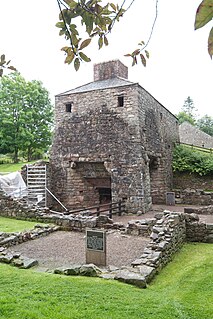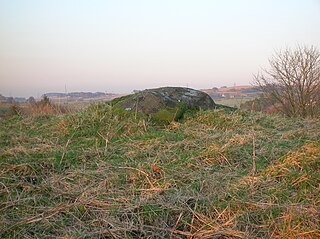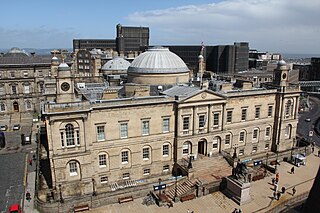 W
WThe Royal Commission on the Ancient and Historical Monuments of Scotland (RCAHMS) was an executive non-departmental public body of the Scottish Government, which was "sponsored" [financed and with oversight] through Historic Scotland, an executive agency of the Scottish Government.
 W
WBirkhill Castle is a stately home, the residence of the Earl of Dundee, located on the banks of the River Tay, a short drive from St. Andrews.
 W
WThe Bonawe Iron Furnace, was an industrial complex located in Bonawe, Lorn District, Scotland. It operated in the middle of the eighteenth century, with the aim of producing pig iron. Central to this complex was a charcoal fired blast furnace.
 W
WCarlin Stone or Carlin Stane is the name given to a number of prehistoric standing stones and natural stone or landscape features in Scotland. The significance of the name is unclear, other than its association with old hags, witches, and the legends of the Cailleach.
 W
WGeneral Register House is an Adam style neoclassical building on Princes Street, Edinburgh, purpose built by Robert Adam between 1774 and 1788 as the headquarters of the National Archives of Scotland. It is a Category A listed building.
 W
WThe Inchindown oil tanks is a disused underground oil depot in Invergordon, Ross-shire, Scotland. The tanks hold the record for the longest reverberation in any man-made structure, surpassing the Hamilton Mausoleum in 2014.
 W
WQ-pits are kiln sites which were dug for the production of white coal prior to the Industrial Revolution when white coal was largely superseded by the use of coke.
 W
WA saw pit or sawpit is a pit over which lumber is positioned to be sawed with a long two-handled saw by two people, one standing above the timber and the other below. It was used for producing sawn planks from tree trunks, which could then be cut down into boards, pales, posts, etc. Many towns, villages and country estates had their own saw pits. The greatest user of sawn timber in past centuries was the shipbuilding industry.
 W
WA shieling, also spelt sheiling, shealing and sheeling, is a hut, or collection of huts, once common in wild or lonely places in the hills and mountains of Scotland and northern England. The word is also used for a mountain pasture for the grazing of cattle in summer, implying transhumance between there and a valley settlement in winter.
 W
WThe Thurgartstone or Ogrestone is a prominent glacial erratic stone near Dunlop in East Ayrshire, Scotland. The Thurgartstone stands in a field at Brandleside Farm and is thought to have been a rocking stone at one time, but it no longer moves due to a build up of soil beneath.
 W
WA tolbooth or town house was the main municipal building of a Scottish burgh, from medieval times until the 19th century. The tolbooth usually provided a council meeting chamber, a court house and a jail. The tolbooth was one of three essential features in a Scottish burgh, along with the mercat cross and the kirk (church).